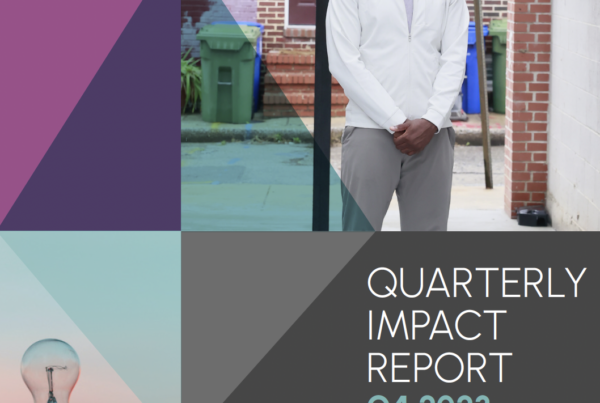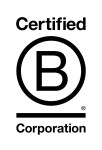
Large banks and foundations have been investing in community development financial institutions (CDFIs) for decades. But until recently, investing in CDFIs was challenging and usually limited to all but experienced large banks, foundations, and some high-net-worth investors. Now technology platforms like CNote are allowing investors of all types to easily deploy capital across a diverse pool of CDFIs.
Many communities across the country are underserved by traditional lending institutions. CDFIs make a social and economic impact in disinvested communities by providing affordable financial products and services, such as mortgage financing for first-time homebuyers, commercial loans, and small business lending.
CDFI financing in underserved markets has shown that community development financing can be profitable and that CDFIs are valuable partners to both their investors and borrowers. Their place-based development strategies have played a critical role in effectively building community wealth.
Table of Contents
- 1 What are CDFIs?
- 2 The history of CDFIs
- 3 The different types of CDFIs
- 4 Where CDFIs get their capital
- 5 The role of CDFIs in community finance
- 6 How community foundations partner with CDFIs
- 7 The benefits of CDFIs for individual investors
- 8 How to invest in a CDFI
- 8.1 CDFI note programs
- 8.1.1 The Impact Note – Enterprise Community Loan Fund
- 8.1.2 The LIIF Impact Note – Low Income Investment Fund
- 8.1.3 RSF Social Investment Fund Note – RSF Social Finance
- 8.1.4 Community Investment Notes – Calvert Impact Capital
- 8.1.5 The Low Income Investment Fund (LIIF) bonds
- 8.1.6 CNote – The Flagship Fund
- 8.1 CDFI note programs
- 9 How platforms like CNote make CDFI investing easier
- 10 Conclusion
What are CDFIs?
Community development financial institutions include mission-driven banks, credit unions, loan funds, and venture capital providers. Through CDFIs’ efforts, billions of dollars have been leveraged for investment in communities left out of the economic mainstream. With limited access to affordable credit and capital, residents of low-income communities are locked out of starting and growing a business, purchasing a home, and having access to retail banking and social service facilities.

CDFIs’ primary mission is focused on supporting economic growth in the communities they serve. CDFIs fund small, often minority-owned businesses, affordable housing, volunteer organizations, and services essential to revitalizing low-income neighborhoods. CDFIs are of critical importance in safeguarding the ability of all Americans to share in the prosperity and innovation of our country.
CDFIs are certified by the U.S. Treasury Department, and most banks supported by community investments are certified CDFIs. Currently, the number of CDFIs continues to increase. There are over 1,000 CDFIs certified by the U.S. Treasury’s CDFI Fund. CDFIs can be found in every state and the District of Columbia, serving both rural and urban communities. As of 2019, certified CDFIs hold $136 billion in assets.
The history of CDFIs
Historically, mainstream banks and financial institutions viewed low-income and minority communities as too risky for investment. Banks took part in the practice of redlining, drawing actual red lines on physical maps to exclude disadvantaged urban and rural neighborhoods from loans and financial services.

Gale Cincotta, co-founder of National People’s Action, instrumental in the passage of the CRA, courtesy of Community-wealth.org
The CDFI movement traces its roots to community advocates who sought to end redlining practices and re-direct capital back into underserved areas by forming community-controlled banks. The federal government also sought to address redlining and alleviate racial discrimination through The Community Reinvestment Act of 1977 (CRA).
The CDFI industry really began to take shape in the 1950s and 1960s. During this era, through its “War on Poverty” campaign, The Johnson Administration launched community development corporations (CDCs) to serve urban and rural poor communities. The foundation for the modern CDFI industry was laid by the successes of many of these early CDCs.
In the 1970s, community-controlled banks were formed, such as South Shore Bank in Chicago (1973) and the Santa Cruz Community Credit Union (1977).
CDFIs also expanded their funding sources by reaching out to private organizations, particularly religious institutions and wealthy individuals. And many community development loan funds were launched with federal funds from the Department of Housing and Urban Development, the Economic Development Administration and the Department of Agriculture.
Credit unions expanded significantly in the 1990s when the government provided new funding and encouraged conventional funders to do the same through revised CRA regulations. In 1994, the Clinton administration enacted the Riegle Community Development and Regulatory Improvement Act. This act established the CDFI Fund “to promote economic revitalization and community development through an investment and assistance program for community development financial institutions.”
In 1995, the Clinton administration also revised CRA regulations that explicitly recognized loans and investments in CDFIs as a qualified CRA activity. The growing record of success of CDFIs has inspired confidence in the industry and continues to attract new sources of support and funding.
The different types of CDFIs
Although CDFIs share a common mission of community development, they have a variety of organizational structures and lending goals. Each type of CDFI has different investment opportunities, and financial products and services it provides to customers in low-income communities.
Here are the four basic types of CDFIs:
-
Community development banks
CDFI-certified banks are for-profit corporations with an economic development mission and community representation on their board of directors. These federally insured banks are organized like traditional banks but are required to have at least 60% of their financing activities targeted to low- and moderate-income communities.
-
Community development credit unions
CDFI-certified credit unions are federally insured financial cooperatives that are designed to provide financial services to individual members of the credit union. The National Credit Union Administration (NCUA) charters, supervises and insures federal credit unions. The deposits in these institutions are insured by the NCUA up to the maximum allowed by law. Many CDFI-certified credit unions have also received designation as “low-income” credit unions by NCUA. This designation allows these institutions to accept non-member deposits and secondary capital.
-
Community development loan funds
CDFI-certified loan funds lend to build local businesses, affordable housing, and community facilities. Loan funds’ borrowers are small businesses, nonprofit organizations, charter schools, individuals, and organizations involved in community development projects. Loan funds also provide financial counseling to individual and business borrowers.
-
Community development venture capital funds
CDFI-certified venture capital funds pool investor money to make equity investments in private operating companies that yield financial returns while accomplishing community development goals. They also provide equity and management expertise to often minority-owned small businesses that have the potential for rapid growth.
CDFI banks and credit unions are depository institutions regulated by federal agencies. CDFI loan funds and venture capital funds are not federally insured and not subject to federal banking regulations.
Where CDFIs get their capital
Banks, the government, foundations, and individual investors are the main sources of funding for CDFIs. The CRA encourages financial institutions to fulfill their CRA requirements by investing in CDFIs. This capital, in turn, funds the capital needs of the CDFI and its community. A CDFI’s success is measured not just on their financial performance, but also by their impact on underserved communities.
Depository CDFIs, such as community development banks and credit unions, get capital from customers and non-member depositors. CDFIs work in partnership with conventional financial institutions to guide private investment into distressed communities, either through direct investment in the CDFI or through lending, investment, and other services.
The CDFI Fund is a crucial source of support for CDFIs and offers capital grants, equity investments, and awards to fund technical assistance and organizational capacity-building. CDFIs apply for funds through a competitive process that often requires the organization to provide a one-to-one match of non-federal funds to receive financial assistance.
The CDFI Fund also rewards banks for making investments in CDFIs and distressed communities through its Bank Enterprise Award Program. The New Markets Tax Credits Program encourages private sector investment by offering tax credits for qualified community development investments.
The role of CDFIs in community finance
CDFIs gather specific knowledge about the communities in which they do business. They create strong relationships with their customers and community leaders. This translates into a willingness and commitment to spend time on specialized programs that are often too time-consuming or costly for traditional financial institutions to implement.
For example, many CDFIs offer small business loans that have lower eligibility requirements than most traditional bank loans when it comes to time in business, credit score, collateral, and annual revenue. Others make financial accounts available to customers with limited or poor credit history. In contrast, traditional institutions tend to offer only a few programs that target the broader market.

Rebuilding underserved communities and making loans to those with limited or poor credit histories requires more than access to conventional loans. It demands lending guidelines that can adapt to the needs of borrowers, the acceptance of unconventional collateral, and educating, training, and assisting potential borrowers on how to effectively use credit and capital.
CDFIs enable those who are economically disadvantaged to become self-sustaining participants in their own future. CDFIs are community pioneers, leading the way in investing in distressed neighborhoods and bringing everyone into the economic mainstream as important contributors.
How community foundations partner with CDFIs
Foundations employ CDFIs’ expertise in everything from sourcing to underwriting. Foundations have even developed their own CDFIs. A notable example is New Hampshire Charitable Foundation that started the New Hampshire Community Loan Fund in the 1980s.
Since 2000 or so, community foundations have been facing competition for donors from commercial banks and investment firms managing donor-advised funds, as well as crowdfunding platforms and giving circles. At the same time, according to this Democracy Collaborative report, community foundations have begun paying more attention to structural poverty and what they can do about it.
As a result, some community foundations that have focused on a passive approach to making grants, have begun experimenting with becoming more proactive through partnering with and investing in CDFIs.

For example, CNote recently worked with the Sierra Club Foundation to figure out how their portfolio could help advance social justice as well as their core environmental goals. CNote made it possible for the Sierra Club to meet its objectives through place-based investing. After finalizing the investment terms, the foundation was able to deploy capital to its targeted communities and connect partner CDFIs on the ground with local Sierra Club leaders to boost momentum for their Ready for 100 Campaign.
With economic factors playing a key role in most social missions, CDFI’s insights can be very informative to the strategies of thematic and place-based community foundations.
Why community foundations invest in CDFIs
CDFI investments work well for foundations that don’t want to deliver loans and manage risk but want to make an impact by directly investing in local businesses.
The CDFI is staffed with loan officers and has built all the systems needed to market and manage a loan portfolio. Their staff have intimate community relationships, so they’re successful in finding the high-impact transactions that foundation investors want.
CDFIs offer foundations a way to cushion financial risk by spreading the foundation’s investment over a diversified portfolio of loans. They also monitor and manage risk, and hold loan loss reserves. These costs are factored into the CDFI business model and interest rate that CDFIs offer investors.
Foundations who care about a specific geographic region invest in CDFIs for both a financial return and social impact in their communities. Foundations are becoming more involved in CDFI and impact investing as a complement to their social and environmental work.
The benefits of CDFIs for individual investors
Awareness and interest in community investing options have grown. Americans have shared a difficult financial experience in recent years that has heightened the awareness of larger numbers of low-income families needing help.

The financial crisis also encouraged some distrust of financial institutions whose risky practices helped induce the crisis. These developments have motivated some to invest more in local and community-based institutions.
The positive effect that CDFIs have on their communities can not be underestimated. Local community-based organizations make the best decisions about how to meet their community’s needs, and CDFI activity also brings responsible first-time homeowners, locally-owned businesses, neighborhood facilities, and other benefits to communities beyond just the financial bottom line.
When you invest in community development financial institutions, you can:
-
Align your investments with your values
Because CDFI investing can make positive changes for those who need it most while generating financial returns, investors can support the causes they care about while putting their capital to work. CDFIs generally offer a modest, fixed rate of return depending on current interest rates and the length of the investment.
-
Increase your portfolio stability
A Morgan Stanley study, of over 10,000 equity mutual funds over seven years, found that, on average, impact investing funds had lower volatility than comparable non-impact funds.
-
Expand your community network
CDFIs offer investors the chance to truly invest in the small businesses of “Main Street America.” The greater impact investing community includes policymakers, entrepreneurs, human rights activists, and development experts, all dedicated to utilizing capital in pursuit of tackling important societal issues.
How to invest in a CDFI
The most common type of CDFI investment is in a community development loan fund. Loan funds provide the security of pooling capital with other investors and spreading risk within a diversified portfolio.
CDFI loan funds are also increasing their presence and sophistication in the community investment sector. Several funds now have formal offerings and are registered to offer their notes in multiple states. Others operate more informally and reach out to investors as an extension of their local fundraising efforts.
Here are a number of CDFI note programs that are available to retail, accredited, and institutional investors in states where they’re offered:
CDFI note programs
-
The Impact Note – Enterprise Community Loan Fund
The Impact Note offered by the Enterprise Community Loan Fund allows you to invest in your community while earning a fixed return of 2.5% for a 5-year term. With your minimum investment of $25,000, you support projects and businesses that are solving essential community development issues, such as affordable housing, health services for the homeless, quality children’s education, entrepreneurial funding, and healthy active seniors. The Enterprise Community Loan Fund has over 30 years of investing experience and is a treasury-certified CDFI that is rated by AERIS and listed in ImpactAssets50.
-
The LIIF Impact Note – Low Income Investment Fund
The LIIF Impact Note is an easy way to invest in the communities you care about while earning a competitive return of 1-4%. This note offers a flexible commitment of 6 months – 10 years with a minimum investment of $50,000. The annual percentage rate is 3% for a 5-year Impact Note. The note is available to non-accredited investors on ImpactUS, a broker-dealer “impact marketplace.”
-
RSF Social Investment Fund Note – RSF Social Finance
RSF Social Finance is among the first to create widely available notes for the “retail” market. It’s open to residents of 48 U.S. states, the District of Columbia, and Puerto Rico, excluding Arkansas and Washington. The note requires a minimum investment of $1,000 and offers a 90-day term, a current interest rate of 1.25%, and is annualized and reset at the beginning of each quarter.
-
Community Investment Notes – Calvert Impact Capital
Calvert Impact Capital’s Community Investment Notes are a “fixed income product that invest in a global portfolio of intermediaries, projects, and funds that finance mission-driven organizations.” Calvert pools investor funds and lends them to a diverse group of CDFIs, affordable housing developers, and international microfinance organizations.
Although not solely a CDFI investment, these notes offer a financial return of 3% for a five-year commitment term. Calvert’s notes are processed and distributed electronically through conventional investment platforms for all types of investors. Community Investment Notes can be purchased online starting at $20 or through a brokerage account, application or check for a minimum investment of $1,000.
-
The Low Income Investment Fund (LIIF) bonds
Low-Income Investment Fund (LIIF) is a San Francisco-based CDFI that has been investing in low-income communities for over 30 years. Its loans support affordable housing, high-quality schools, child care centers, health centers, and other community facilities that benefit low-income communities.
While buying bonds may have higher barriers to entry than notes, if you’re able to do so, you can invest in a diverse portfolio that helps achieve both competitive returns and a measurable impact on struggling communities. LIIF’s capital is critical to its borrowers who are mission-driven developers and nonprofits. Recently, LIIF announced its first public debt offering with a $100 million Sustainability bond issuance. The bond issuance allows LIIF to provide more stable, lower cost, and longer-term capital to community organizations.
-
CNote – The Flagship Fund
CNote acts as a bridge between individual investors and CDFIs, pooling small investments and funneling them to partner CDFIs. The Flagship Fund accepts investments from investors of any net worth, so you can get started with just $5. With an online CNote account, you can invest your savings in certified CDFIs that are working to improve community development. You can earn 2.00% with only a 30-month term and flexible quarterly liquidity if you need your money early.
How platforms like CNote make CDFI investing easier
As more individual investors look to CDFI and other impact investing options to give their money more meaning, they’re demanding easier access to them. While some companies have their own retail platforms where you can invest directly, like CNote, many others are only available through brokers or direct offerings.
Calvert is a trusted impact investment platform due to its long history. You can directly invest online in Calvert’s Community Investment Notes and the easy-to-use platform offers helpful assessment tools that can save investors time in trying to evaluate their impact investment. The vast majority of Calvert’s loans are funded through a combination of balance sheet and structured debt loans. Both lower and higher cost options are available for investors.
CNote is a technology platform that has unlocked a diversified network of certified CDFIs that allow investors to get competitive returns while targeting thematic and place-based investments. The platform supports a variety of account types and customers including personal, trust, and business accounts. CNote also provides support for financial advisors who want to invest and manage their clients’ funds. And CNote partners with institutional investors, foundations, large banks, and other traditional financial institutions.
The process from the individual user’s side is simple: There is no minimum deposit, and once users create an account, they can use an interface that resembles a standard online investment account where they can link to their regular bank account and transfer money into CNote.
Because CNote is an investment product, not a savings account, the return is technically not guaranteed, but the security of investments is based on the historical performance of CNote’s CDFI partners, which haven’t lost any investor dollars since their founding and – like CDFIs – are noted for their solid financial performance.
Conclusion
By investing in a CDFI, any investor can make a deep impact in their local communities while receiving a healthy financial return. At CNote, we’re committed to growing community wealth and providing those excluded from the traditional financial system the access to the capital they need to pursue their entrepreneurial dreams and build businesses that increase prosperity for all.









